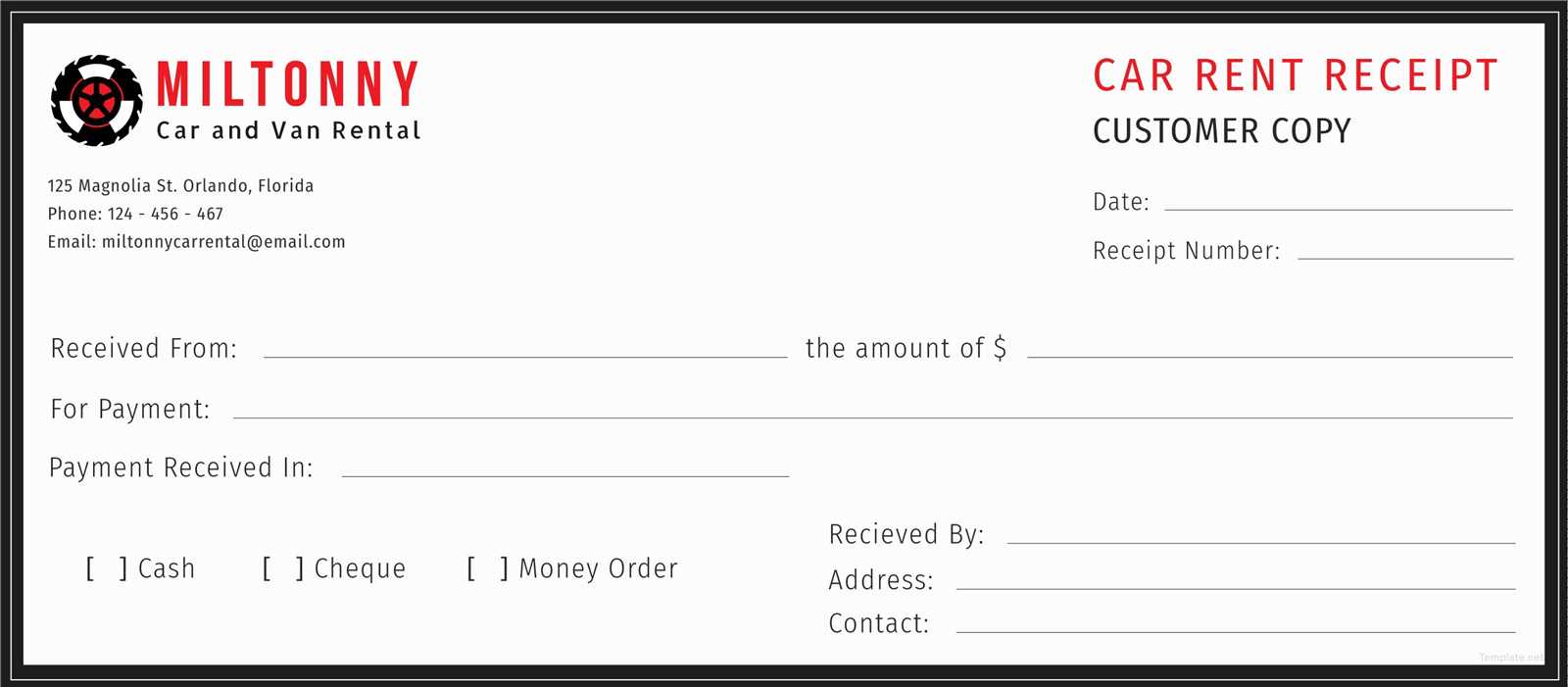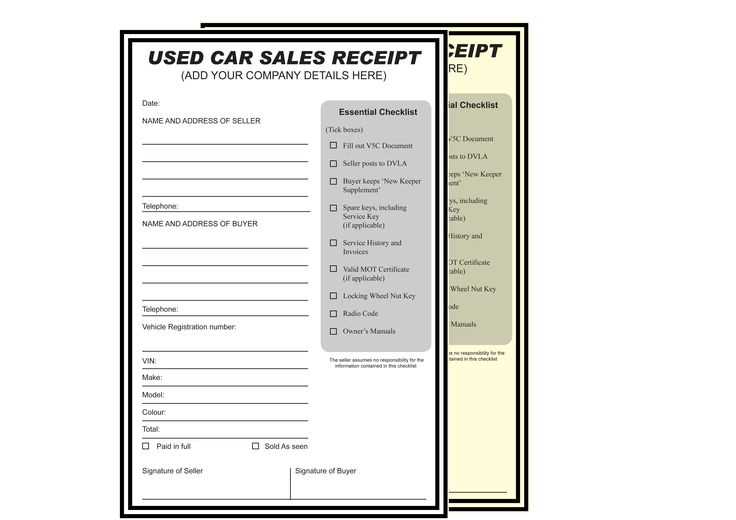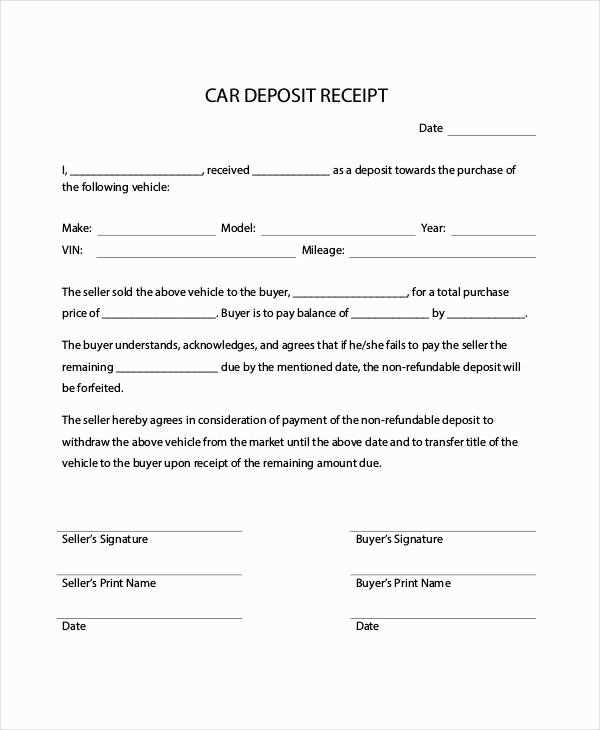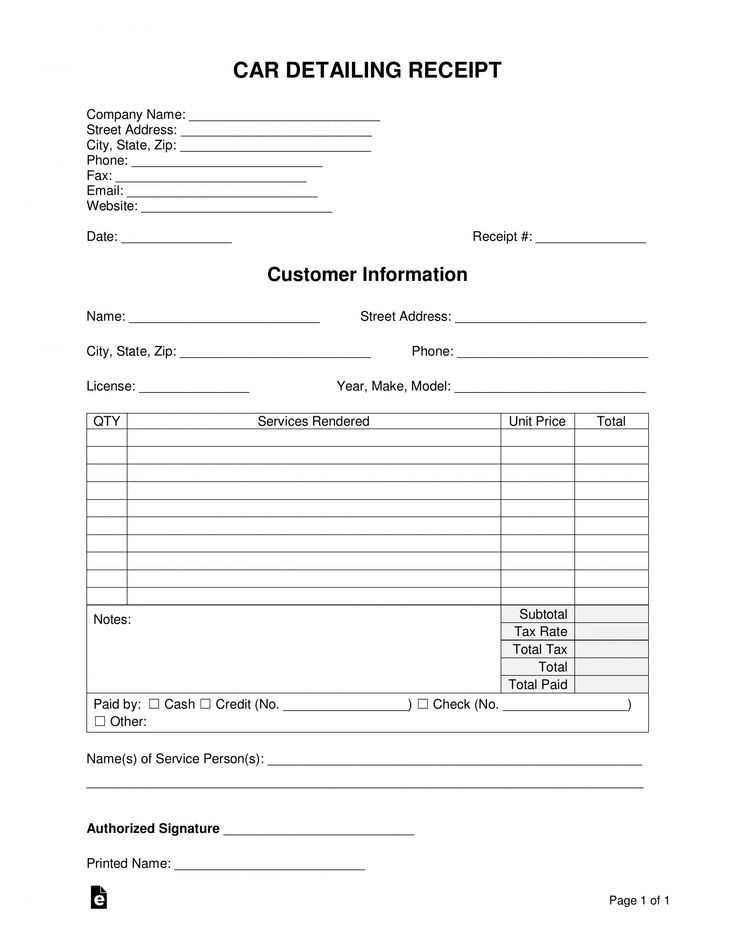
When selling a car, providing a clear and concise receipt is key to avoid any misunderstandings. A well-crafted receipt protects both the seller and buyer by confirming the transaction details. Start by including basic information about both parties, such as full names and addresses. It’s important to include the exact date of the sale to ensure clarity.
Next, list the car’s details, including the make, model, year, VIN (Vehicle Identification Number), and mileage at the time of sale. This creates a record that ties the sale to the specific vehicle and avoids future disputes. Don’t forget to include the agreed-upon sale price, and mention the method of payment, whether it’s cash, check, or bank transfer.
Finally, indicate any warranties or lack thereof. Make sure to note whether the car is sold “as-is” or with any guarantees. A receipt should also include a section for both parties to sign, confirming they are in agreement with the terms of the sale. Including these details will ensure both the seller and buyer have a record of the transaction.
Receipt Template for Selling a Car

To create a clear and effective receipt for selling a car, include the following key details. This will ensure both parties have a proper record of the transaction.
Basic Information
- Seller’s Name and Contact Information: Include full name, address, and phone number.
- Buyer’s Name and Contact Information: Ensure the buyer’s full name, address, and phone number are listed.
- Vehicle Information: Record the make, model, year, VIN (Vehicle Identification Number), and license plate number.
- Sale Price: Clearly state the amount the car was sold for, both in numerals and words.
Transaction Details

- Date of Sale: Specify the exact date when the transaction occurred.
- Payment Method: Indicate how payment was made (e.g., cash, bank transfer, check).
- Condition of the Vehicle: Note any agreements regarding the car’s condition, such as “sold as-is” or if any warranties were provided.
- Signatures: Both the seller and buyer should sign and date the receipt to acknowledge the agreement.
Including these details will ensure transparency and minimize future disputes. Always keep a copy of the receipt for your records.
Creating a Basic Car Sale Receipt

Begin by clearly listing the names and addresses of both the seller and the buyer. This ensures both parties are easily identifiable. Include the date of the transaction for reference.
Next, include the vehicle’s key details: make, model, year, VIN (Vehicle Identification Number), and mileage. These identifiers confirm the specific car being sold and help avoid any confusion.
Detail the sale price of the car, specifying the agreed amount. If there are any additional terms, like deposits or installment payments, include those clearly. This makes the agreement more transparent.
Include a section to confirm that the car is being sold “as is,” without any warranties. Both parties should sign to acknowledge the terms of the sale and the car’s condition at the time of purchase.
For further clarity, consider adding a statement that the seller has the legal right to sell the vehicle, confirming that it is free of liens and other encumbrances.
Including Necessary Information: Buyer, Seller, and Vehicle Details
Clearly list the buyer’s and seller’s full names, addresses, and contact numbers. These details create a reliable record for both parties and ensure any future correspondence can be handled smoothly. Ensure both parties sign and date the receipt to confirm mutual agreement.
Buyer and Seller Information

Provide the buyer’s and seller’s personal details, including full name, address, phone number, and email address. This helps confirm the identities of both parties and creates a point of reference for future communication. Use clear and legible handwriting or type these details to avoid any misunderstandings.
Vehicle Information
Include the vehicle’s make, model, year, vehicle identification number (VIN), color, and current mileage. This section serves as proof of the car being sold and clarifies any potential confusion regarding the specific car involved. The VIN is especially important for tracking and registration purposes. If applicable, note any outstanding finance on the car or mention if the vehicle is sold “as is.”
Ensuring Legal Compliance and Avoiding Common Mistakes
Double-check the buyer’s details, including their full name and address. Incorrect or missing information can create complications later on. Make sure both parties sign the receipt, confirming the sale agreement. This will help protect against future disputes.
Clearly state the sale price and the vehicle’s condition. Specify whether it’s sold “as-is” to avoid potential claims from the buyer. Include details about the vehicle’s make, model, year, and VIN. These specifics will help prove the transaction in case of any legal challenges.
Verify that the receipt is dated correctly. A missing or incorrect date can lead to confusion about the transaction timeline, especially if issues arise later. Ensure that all sections are legible and unambiguous.
It’s helpful to mention if there’s any existing warranty or other stipulations that might affect the sale. This can protect you if the buyer raises concerns later. If there are no warranties, explicitly state “No Warranty” on the receipt.
Provide copies of the receipt to both parties. This ensures transparency and can prevent misunderstandings. Don’t forget to retain a copy for your own records in case you need it later.
Lastly, ensure that the transaction complies with local regulations. Each state or country may have different rules for selling a car, such as emissions standards or mandatory forms. Check your local laws to avoid unnecessary fines or delays.


